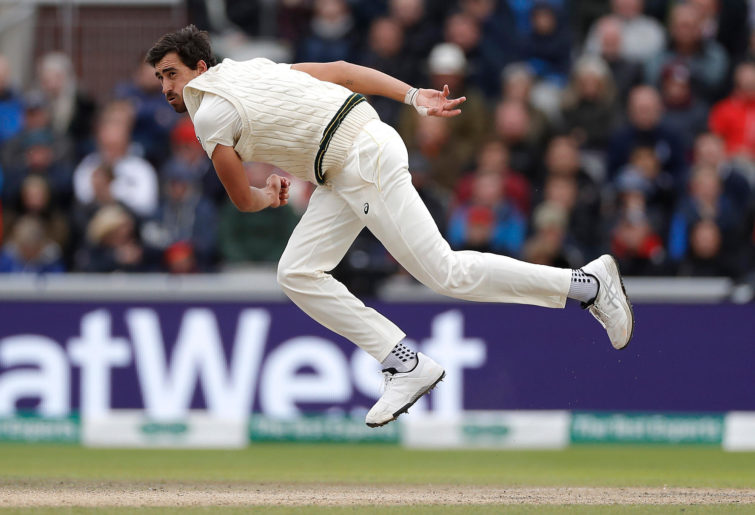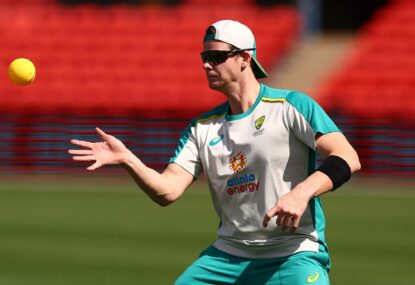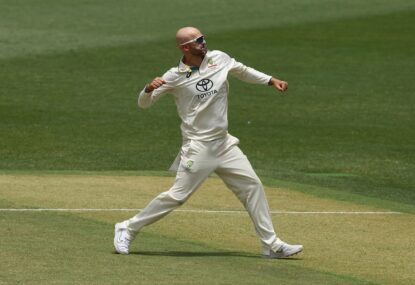Mitchell Starc’s performance at the Gabba on Day 4 and 5 of the Test was deeply troubling.
Here was Australia’s match-winner, primary strike bowler and most experienced paceman.
He wilted in the spotlight. It didn’t matter if the Brisbane skyline was dark or sunny, Starc bowled too short and too wide to be of any threat to an inexperienced Indian batting order.
Even when bowling a decent line and length, he failed to extract pace, bounce or swing on a deteriorating pitch.
This is in contrast to India, in particular debutant Shardul Thakur, who consistently moved the ball away from the outside edge of the Australians.
To put this into perspective, Mitchell Starc has played 15 times as many Tests as the entire Indian pace-attack on a pitch none of them had ever played on before.
Not just any pitch, but the Gabba, an Australian fortress of pace and bounce, where no Australian team had lost since 1988.
They made him look second-rate, and frankly, he was.
Starc was a liability. Only bowling 16 overs and not trusted with the second new ball, he conceded 4.5 runs an over to finish up with none for 75. In isolation, it’s just a bad bowling effort.
In reality, his performances especially at the end of important series’, show a pattern of inconsistent and ineffective bowling.

(Ryan Pierse/Getty Images)
He actively harms Australian efforts at victory.
This has not always been the case. Australia’s pace attack of Starc, Pat Cummins and Josh Hazlewood are one of the best ever to don the baggy green.
They have continuously managed to paper over the cracks of a porous Australian batting line-up since they first played together in 2017. In the 16 Tests that Starc, Cummins and Hazlewood have played together before Melbourne they have taken 215 wickets at an average of 23.15, alongside a strike rate of 49.45.
Although playing fewer Tests and subsequently taking fewer wickets, they are statistically better than McGrath, Gillespie and Lee and even the West Indian death line-up of Curtly Ambrose, Ian Bishop and Courtney Walsh. The three complement each-other to become a unit greater than their individual parts.
Cummins bowling more than 140km/h at the top of off, can extract bounce and pace from even the slowest of wickets. Hazlewood with his elite movement of the seam, worries batsman with his pace, guile and bowling acumen. This is supplemented by Starc, an inconsistent yet deadly wicket-taker, renowned as the best bowler to the tail in the world.
The Adelaide Test was the perfect example of how these three work well together. Cummins and Hazlewood both bowled off an exceedingly tight line and length at over 140km/h.
They nipped the ball off the seam, forcing batsman to play shot after shot just outside the line of off-stump. They skittled India for 36. Starc unsettled the openers, before Cummins and Hazlewood tore through the batting order.
It was a brilliant performance, and rightly put Australia as unbackable favourites in the series. What these three have achieved in an era of unprecedented cricketing demands across three formats of the game, is astonishing.
However, in the three Tests without Virat Kohli in the Indian squad, the trio took 29 wickets at an average of 39.47, striking at a rate of 71.06. This has not been the fault of Cummins or Hazlewood. Cummins in the final three Tests, took 14 wickets at 25.14, at a strike rate of 54.21.
Hazlewood although weakening his strike rate to 65.27, took 11 wickets at 24.9. These two although taking longer to snare wickets, bowled consistently and economically on tough pitches for bowling.
The problem was Starc. In the final three Tests, Mitchell Starc took seven wickets at 64.67, with a strike rate of 94.29. If you exclude his haul of 3/78 in the Melbourne first innings, his strike rate as 126.5, and his average 77.5.
Starc in total, grabbed 11 wickets at 40.72. for the series. His strike rate was 74.7. He regularly conceded 3.5 to 4 runs an over, allowing batsman to relieve the pressure built by Cummins and Hazlewood. Without a Starc to complement their skillsets, Cummins and Hazlewood could not bowl Australia to victory.
It’s not just the stats which tell the story. In the final innings at Brisbane, Starc bowled over the wicket to Cheteshwar Pujara and Shubman Gill, allowing both batsmen to regularly work him into the legside. It was poor bowling, poor tactics and poor decision-making.
He didn’t swing the bowl, move it off the seam, or angle the ball against the right-handers.
Most damningly, he conceded 20 runs to Gill and Pujara in an over, the highest number of runs conceded in a single over in the fourth innings in Australia since records began.
His bouncers were not effective, his line not consistent enough to trouble the Indians, and his pace was only just above the 140km/h mark; a far cry from the mid 140km pace he has bowled throughout his career.
This is troubling. It shows a man out of form and a man not fit enough to last a gruelling four test series. Yes, he was potentially injured, bowling to a defiant Indian batting line-up on uneven footmarks. But for someone of Starc’s calibre and experience, this match should not be considered anything but a failure.
What was more troubling was that this performance reflected a pattern in Starc’s bowling since 2017.
Simply, against the world’s best at the end of a series, he flops.

(Photo by Ryan Pierse/Getty Images)
Against India in 2018-19, he averaged 34.53 over the series, ending the series with figures of 2-87, 0-11 and 1-123. In the South African series of 2018, he finished the tour conceding 304 runs for three wickets over the last two Tests.
This is after taking nine wickets in the first Test. In the triumphant Ashes series of 2017-18, he took 2-80 and 1-37 in the Sydney Test, well below the figures he produced in the first three matches. Even in 2017 when Australia trounced Pakistan, Starc took 2-134 in the final test, conceding well over three runs an over.
These figures might indicate that these pitches don’t suit his bowling, especially the increasingly slow SCG wickets where all Australian summers finish.
It is also important to acknowledge that Starc has bowled well against New Zealand, Pakistan and Sri Lanka over the previous two summers. However, these series were dominated by Australia, were no longer than three Tests each, and lacked quality batting to showcase Starc’s flaws.
Even if you include the New Zealand series into his statistics (as they are the best Test team in the world), since the first of January 2018, he has averaged 37 against them, India, England and South Africa. Against the top four Test nations and in matches where Australia has struggled, his consistency and durability has been shown to produce lacklustre performances not worthy of Test selection.
In the toughest of moments, his bowling has lacked variety, skill and quality.
Starc has been one of the finest fast bowlers in this generation. His pace, bounce and swing have seen him almost take 250 Test wickets, while being the best limited overs bowler in the world.
Throughout his career, he has overcome criticism of his consistency, limited skillset and line and length, to become a staple in the Australian team over the past five years.
Yet after another miserable display in an embarrassing Australian loss, Starc’s worth to the Australian team, is now outweighed by a consistent pattern of poor performance.
Starc has had a good career, but it is time for Australia to look elsewhere.







































































































